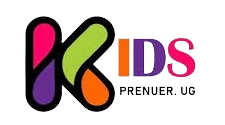Lesson 4: Introduction to Microsoft Word (Formatting, Typing)
-
What is Microsoft Word?
- Microsoft Word is a word processing application that allows users to create, edit, and format documents. It is widely used for writing letters, reports, essays, and other types of professional or personal documents.
- Purpose of Word Processing:
Word processing software helps people create clean, organized, and professional documents quickly. Whether you’re typing a resume, preparing a school report, or creating a business proposal, Microsoft Word makes the process easier.
Typing in Microsoft Word:
- Opening Microsoft Word:
When you open Microsoft Word, you’ll see a blank page where you can start typing your document. Use your keyboard to type text just like you would with any text editor. - Basic Navigation:
- Cursor: The blinking line that shows where your typing will appear.
- Enter Key: Press this to start a new paragraph.
- Backspace Key: Use this to erase text one character at a time.
- Space Bar: Adds spaces between words.
- Example:
- Start typing a simple sentence:
“My name is Sarah, and I love learning new skills!”
You’ll notice that Word automatically capitalizes the first letter and adds a red underline if a word is misspelled.
- Start typing a simple sentence:
Basic Formatting in Microsoft Word
- What is Formatting?
Formatting in Word refers to changing how your text looks. This can make your document easier to read and more visually appealing. Common formatting tools include font size, font style, and text alignment.
Key Formatting Tools:
- Bold (B):
Makes your text thicker and more visible.- Example:
“I love learning new skills!”
- Example:
- Italic (I):
Makes your text slanted, giving emphasis.- Example:
“Microsoft Word is a versatile tool.”
- Example:
- Underline (U):
Adds a line under your text to highlight it.- Example:
“Please underline important points in your essay.”
- Example:
- Font Size and Style:
- Font Style: You can change how your text looks by selecting a different font. For example, switching from Calibri to Arial gives the text a new appearance.
- Font Size: Adjust the size of your text to make it larger or smaller. Common sizes for body text are between 11 and 12, while headings are usually 14-16.
- Example:
“This is in Calibri, size 11.”
“This is in Arial, size 16.” (Larger and different font style)
- Text Alignment:
- Left Alignment: This aligns your text to the left margin (most common for paragraphs).
- Center Alignment: Aligns the text in the middle (useful for titles or headings).
- Right Alignment: Aligns text to the right margin.
- Example:
“My name is Sarah.” (Left Aligned)
“Welcome to my document!” (Centered for a title)
Real-World Examples of Formatting:
- Resumes:
Formatting is important when writing a resume. You want your name and contact information in bold and centered at the top, while your work experience should be aligned to the left with clear bullet points. - School Reports:
In a report, headings should be larger and bold to make sections clear. Proper alignment and spacing make the document easy to read. - Business Letters:
In business correspondence, you would center the company name and date, left-align the body text, and use bold for the subject line.
Practical Activity
- Task 1: Typing Practice
- Open a new Microsoft Word document and type a short paragraph about your favorite activity. Use the space bar for gaps, the enter key for new paragraphs, and backspace to correct errors.
- Task 2: Formatting Exercise
- In the same document, bold the title of your paragraph, change the font style to Arial, and adjust the font size to 14. Make sure your text is aligned to the left.
- Example:
Title: My Favorite Activity
Body: I love going to the park on weekends. The fresh air and open space make it the perfect place for a walk or a picnic. It’s also a great time to spend with friends and family.
